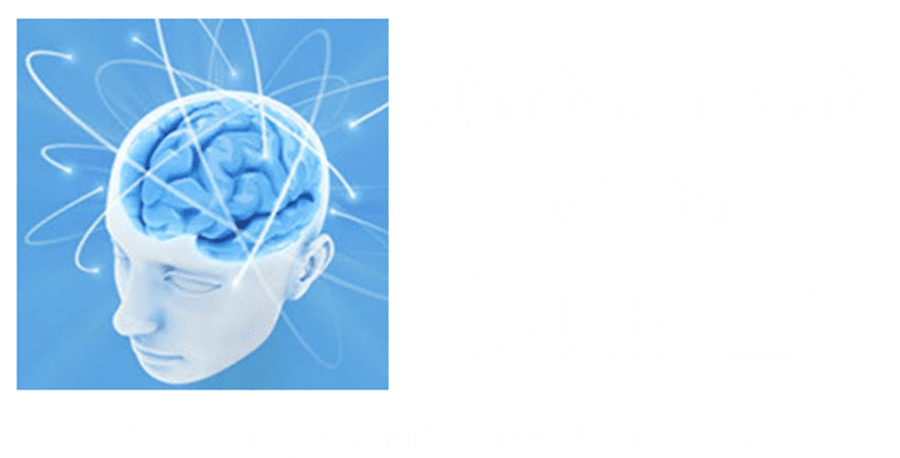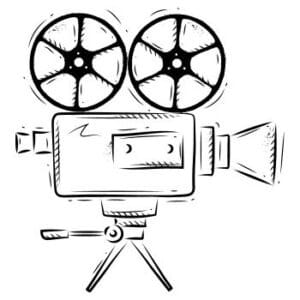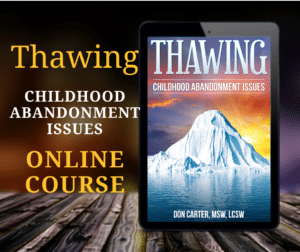
NLP Tools and Resources
Home »
NLP tools are ideal for working directly with the neural network coding system of the brain.

The emotional state may be positive or negative, usually depending on that person’s past experiences with Christmas. Take a moment to really look at the picture to the right an notice how it “makes you feel”. Then notice what memories begin to run through your mind’s eye.
Are there images of Christmas’ past? If you added a soundtrack to the images, what sounds would you hear? How do these sounds and images make you feel? Images, sounds, feelings, sensations, smells, and tastes are the only ways that the brain can code memories and experiences in the networked databases of the subconscious mind.
NLP tools help to actively change emotional states by changing the coding of memories. If you like a certain state, would you like to be able to amplify that state? If you don’t like your emotional state how about replacing it with a state you prefer or at least decreasing the intensity of it?
Try this little experiment…
Choose a favorite memory…now close your eyes and allow that memory to come forward in your mind’s eye…Now, make it bigger…brighter and more colorful…hear the sounds of that memory…turn them up…now add your favorite song or another favorite sound…smell the smells that go with that memory…taste the tastes of that time…hot chocolate with marshmallows maybe.
Now, Choose a bad memory (pick only a moderately bad one here)…allow it to come forward in your mind…now push it further away…make it smaller and blurry…drain the color out of it and make it black and white…move the sound so it seems to come from further away…or muffle the sound as if it is coming from another room.
These are simple submodality shifts…just one of many NLP tools you can use to run your own brain. You can choose your own state if you develop a neural network of NLP tools that work for you. But it is like anything else – NLP takes practice to become automatic. But the brain can learn fast, especially when we learn to speak its language.
NLP Tools – Modeling
When we are kids we learn from our role models. Through their behaviors dad models how men are in the world and mom models how women are. We watch them, listen to them, then experience feelings because of what we see and hear. Later we integrate what we take in by emulating or “copying” them.
In this case, integration is another term for creating a neural network or program… This particular network records the major characteristics of our parent’s personality and strategies – NLP lingo for ways of doing things. How many of us have experienced this thought, “Omigod! I’m becoming my father/mother!” Maybe you experience this realization as a good thing, maybe not.
In certain situations, we are triggered into a pattern of behavior that comes from these recordings. It’s a program that runs automatically because it has been integrated into the Internet of our mind. Neuro-Linguistic Programming (NLP) is a field that grew out of this concept of modeling when Richard Bandler, a computer programmer and John Grinder, a linguist, systematically modeled some of the greatest therapists of all time.
They spent time with Virginia Satir…the mother of family therapy, Frederick “Fritz” Perls… the father of Gestalt Therapy, and Milton Erickson…creator of “Ericksonian” Hypnotherapy. They modeled others as well such as the great cultural anthropologist, Gregory Bateson. Bandler and Grinder believed that modeling these masters would give them the information they needed to recreate their results.
They felt that by discovering exactly what they were doing, breaking it down piece-by-piece, that they could teach others how to get the same results. Through their work, they developed a multitude of NLP tools and models for therapy, all of them consisting of elements of other forms of therapy. This is why NLP is often referred to as a Model of Models – a Meta-Model.
Grinder, Bandler, and their students continue their work today, developing the relatively new field even further. I don’t intend to go into detail about the theory and practice of NLP here. It’s my goal simply to introduce the topic along with a few of NLP tools and techniques useful for establishing and developing new, more productive neural networks. Click the Help Button to arrange a consultation or set up an NLP coaching session.
But we need to begin with some terms and fundamentals. It might be a good idea to briefly review how we input sensory data from the world…how we filter and process that information to make our unique “maps of the world”… and how we output data back into the world.
NLP Tools – The Movie Analogy
The brain can use exactly six forms of data when it comes to making sense of what goes on in the world around us – it can use images we see, sounds we hear, physical sensations, tastes, smells, and word’s to take in, represent, and record or “code” our experiences in memory.
The Movie Analogy in an NLP tool that helps us understand this process better. When sensory data comes into our unconscious mind it is in the form of random bits of raw hear-see-feel-smell-taste data. We can make no sense of the random data so the thalamus and prefrontal cortex collaborate to package and categorize the raw data into a coherent form; i.e., a “movie” that re-presents “what just happened”.
The sequence goes like this – an event occurs in our world… through our sensory input channels, the subconscious mind takes in biased data, assembles & produces a hear-see-feel movie, and re-presents that movie in the “theater” of our mind – just around eyebrow level. I hyphenate the word represent to make a point – the movie we watch is actually only a replay or re-production of what just happened… and not usually a very good one because it was made with very limited and biased data.
The “theater of our mind” has a visual track, sound track, touch track, smell track, and sometimes a taste track. As we watch and listen to the movie we have thoughts and feelings about it. This is the point where we “make meaning” out of the experience or event that just occurred. As a result of all of this filtering and processing, we have just co-created our experience AND our emotional state.
Our emotional state at any given moment is determined by the genre of the movie we are watching…

If we are frightened, we are likely watching a scary movie.
If we are bored we are watching a boring documentary, pointless commercials, or a blank screen
If we are excited we may be watching a thriller or action-adventure movie
If we feel tense, on the edge of our seat, we are likely to be watching a suspenseful drama.
The movies we watch come out of our personal audio/video library – the history of our experiences. Some of us need to update that library which is, in large part, what NLP tools are about.
NLP Tools – Changing States
Our emotional state is usually what we first notice. All the rest leading up to this state may occur just out of our awareness. If we stop and examine the “movie we are watching” we can then notice the process and our part in it. By the way, we have the ability to choose which channel we watch in our mind in just the same way we can choose the channels on our TV. If you watch much TV you may be aware that you have “favorite” shows.
These are you favorite shows because you like the emotional state they produce. The TV has become an external tool for you to get out of one emotional state at the end of the day and into another more desirable state… this is the power of television. Other people like to read a book in order to get out of one state and into another…others surf the net…others play video games, others go to the bar…others work late…others comfort eat… still others do a combination of these.
The list of methods for changing our emotional state is virtually endless in this candy store we call America. In the past, before technology took hold, we were much more limited in external methods for changing states. Just 75 years ago there was no television…Just a radio and books to read. Listening to the radio and reading novels required creating our own movie in the Theater of our mind.
Back then, we had to rely more on our own internal resources… such as creativity… to change our state. We no longer need to rely so heavily on internal resources, so they can may go undeveloped unless we consciously choose to exercise them. Changing channels in the Theater of our Mind is a skill that takes creativity, awareness, and repetition to establish. When we develop this fairly simple skill we have obtained the most powerful tool available for changing our neural pathways – the ability to run our own brain.
NLP Tools – Words are Anchors for Package of Experience
Its time again for another experiment – Choose one of the following words…fun, taxes, vacation, home, pet, or friend. Now, close your eyes and think about that word. Take a moment to notice what happens in your mind-body as you are thinking about the word.
Chances are that you saw images that were examples of the word… and/or heard self-talk describing or defining the word…and/or immediately felt a physical sensation and/or an emotion in response to the word. You may have even remembered a smell or taste that goes with that word… especially now that I mention it.
This is how we perceive and experience “reality” – our unique map of the world. This is also why we sometimes have problems communicating with each other. Words are simply anchors for packages of experience.
If I ask two people to close their eyes think about the word “fire”, one may burst into tears while a broad smile appears on the face of the other. The former remembered a house fire that claimed the life of her parents… the latter was put in mind of pleasant experiences of being in Campfire Girls.
Many arguments are simply the result of differing experiences or mind-movies brought up by the use of certain words. The same word is anchored to different experiences and each experience is “tagged” with an emotional state that goes with it.
If you have ever said, or heard someone say… “It’s hard to put it into words”… you can now know why – the movie or package of experience is hard to translate into “anchors” – in this case, words – so that it can be communicated.
NLP Tools – Addictive Anchors or “Triggers”
For an alcoholic, just thinking about a drink will bring up hear-see-feel-taste-smell movies that set up a desire to drink, unless he/she has broken through their system of denial. In the latter case, movies/memories of the pain caused by drinking can actually create a temporary aversion to drinking. I say temporary because as soon as this person gets far enough away from that pain the desire to drink returns – sometimes with a vengeance.
For a gambling addict, just thinking about being at the track with all the sights, sounds, and smells can result in a compulsion to gamble. If you are hooked on chocolate, just think for a moment about your favorite chocolate candy and you will see what I mean.
Well-established neural networks play movies in our mind automatically, and on cue, that can lead to problems in the form of obsessions – unwanted thoughts and compulsions – unwanted behaviors. The good news is that we can take charge of the Theater in our mind to edit and create movies in a way that generates solutions or alternatives.
For instance, when a movie is playing (a fantasy) about using your addiction of choice, stop, and change channels in your mind to a movie about the worst experiences you have had as a result of using that object or activity. In AA they say “Whenever you have an urge to drink again, just remember your worst drunk”.





